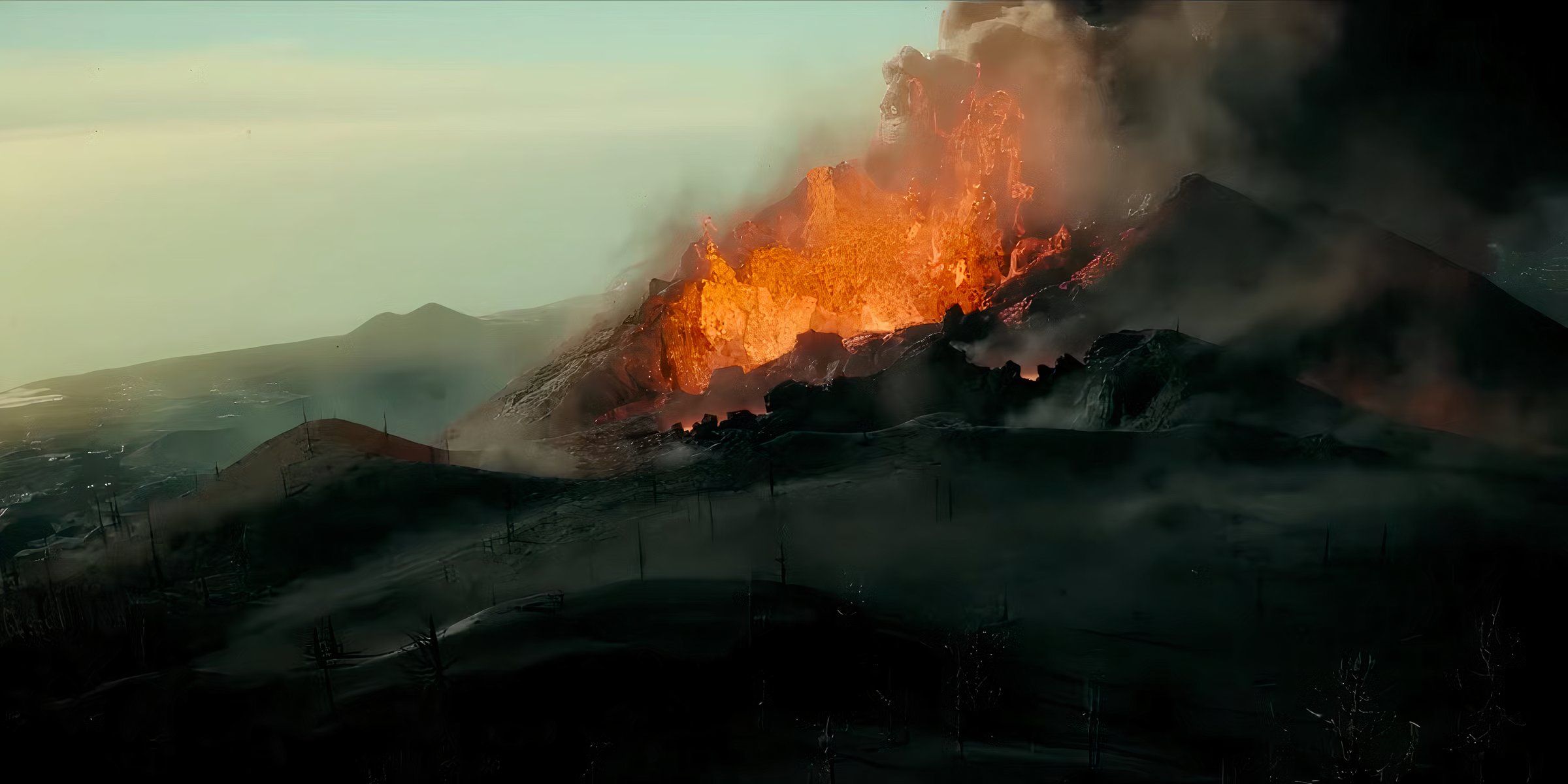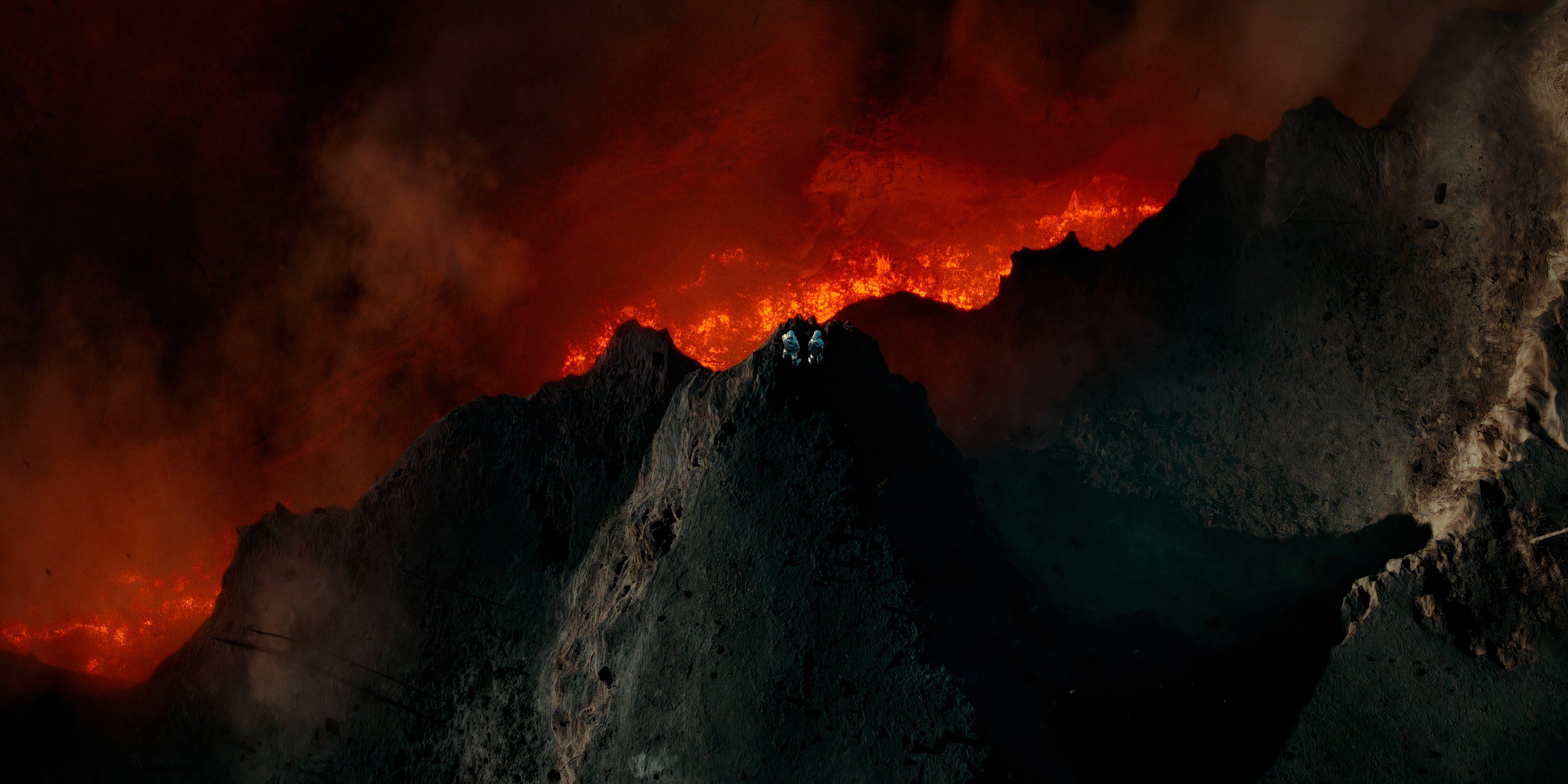Netflix's disaster series, La Palma, offers up a truly terrifying premise. Following a Norwegian family on holiday to La Palma, an island next to Tenerife, a scientist discovers that a crack in the island's surface is widening, with a domino effect leading to the island's volcano equivalent to the size of Manhattan collapsing into the sea. With planes crashing due to the ash, and massive tsunami waves being created, which characters in La Palma describe as the worst natural disaster humanity has faced, the stakes of the scenario are sky-high, even if the more personal character moments feel slightly lacking in weight or logic.
This frightening prospect has led to many questioning whether such a scenario is plausible, even when stretching geological theory. Certainly, La Palma does a good job attempting to base the disaster on as much science as possible, even including a documentary-style opening credits that adds a degree of credibility. However, it must be said that this idea of a volcano collapse causing a mega-tsunami that would kill thousands is not one that is backed by qualified scientific opinion, as explained in an article published by the USGS Hawaiian Volcano Observatory in 2021, but a theory made in 2001 that doesn't hold up under scrutiny. Therefore, it may be a terrifying premise, but not one you should lose sleep over.
'La Palma's Premise Was Based On a 1960s Discovery and 2001 Scientific Paper
 Image via Netflix
Image via Netflix
As with every myth or fictional tale, there is a little bit of truth in La Palma's apocalyptic scenario when it comes to the idea of a landslide into the ocean causing a tsunami. First noticed in the early 1960s by USGS Hawaiian Volcano Observatory Scientist Jim Moore, Basaltic ocean islands such as Hawaii and the Canary Islands have massive landslides roughly every 100,000 years. In this scenario, a huge portion of the island slides into the ocean, causing a local tsunami wave that, in this theory, can be as high as 100m.
These have been known to happen, such as the 1883 eruption of Indonesia's Krakatau which caused a tsunami that killed tens of thousands, as well as in 2018 where another eruption of Krakatau caused the collapse of an island in the volcano's caldera, leading to another tsunami that killed hundreds. Therefore, it is true that the original idea holds up; that volcanic eruptions can cause landslides that lead to tsunamis. This understanding led to a 2001 paper that theorized that La Palma itself could collapse into the ocean following an eruption, which could lead to a mega-tsunami as big as 25m hitting the east coasts of the North and South Americas.
Thankfully, the 2001 Hypothesis is Heavily Disputed by Current Scientists
 image via Netflix
image via Netflix
The largest issue with the 2001 argument about La Palma causing a mega-tsunami is that it was assumed that there would be an unprecedentedly large landslide into the ocean in one motion. However, ocean mapping has indicated that this simply does not occur but rather happens at an incremental rate over time, which means the volume of water displaced is not great enough to trigger a mega-tsunami. Even in a worst-case scenario, a collapse of La Palma would only lead to an ocean wave the height of 1-2m, which is dangerous though not enough to consider it the worst natural disaster in human history, as the Norwegian scientist Marie (Thea Sofie Loch Naess) in La Palma suggests. Even when scientists look back into ancient history to see if these kinds of events have happened before, they find no evidence to suggest such a catastrophe has ever occurred. Thankfully, we can simply enjoy La Palma as the disaster series it is rather than as a premonition of a disaster to come.
'La Palma' Does a Fantastic Job of Rationalizing and Dramatizing the Catastrophe
Although the mega-tsunami theory is heavily disputed, that doesn't stop Kasper Barfoed's La Palma from being a frightening prospect that we pray won't happen. It seems that, in order to get around the issues with the theory, La Palma has Marie posing the idea that climate change could lead to more earthquakes and an increase in carbon dioxide under the volcano's surface, increasing the pressure. Their inclusion of a faultline on the mountain's side also adds a bit of science fiction that helps to engage the audience.
What makes this so impressive is that it means we rarely question the logic of what we are witnessing. As it is acknowledged within the show, it would have to be the "perfect storm" of events to create a mega-tsunami, and even then, the action we witness looks so good we don't have time to wonder if it is plausible or not. We simply accept that a massive event is occurring because the basis for its existence is consistent throughout, especially Álvaro's (Jorge de Juan) simple explanation of the domino effect that would cause such an eruption: "gas, ash, lava."
Overall, the idea of La Palma collapsing into the ocean and causing a tsunami so big it is felt almost the world over is incredibly unlikely, if not impossible. Whilst it is based on some scientific hypotheses that go back to the 1960s, there simply has not been enough evidence to suggest there is any real threat of this occurring. Despite this, that didn't stop a slight panic when the 2001 paper was announced, similar to the mania induced once people started to realize what was happening in La Palma (and even this article won't stop some people from preparing their doomsday shelters for 100m tall waves.) The logic used within the show is sound enough for a casual audience to get on board with, and the impressive special effects of massive waves and eruptions causing planes to crash never take you out of the moment but have you gripping your seat with tension.
All episodes of La Palma are currently available to stream on Netflix in the U.S.

Your changes have been saved
Release Date December 12, 2024
Cast Anders Baasmo Christiansen , Thea Sofie Loch Næss
Seasons 1










 English (US) ·
English (US) ·